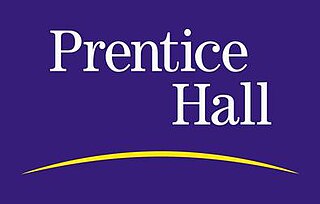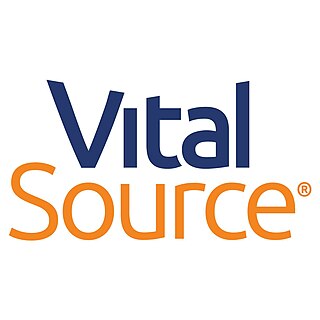Educational software is a term used for any computer software which is made for an educational purpose. It encompasses different ranges from language learning software to classroom management software to reference software. The purpose of all this software is to make some part of education more effective and efficient.

PLATO, also known as Project Plato and Project PLATO, was the first generalized computer-assisted instruction system. Starting in 1960, it ran on the University of Illinois's ILLIAC I computer. By the late 1970s, it supported several thousand graphics terminals distributed worldwide, running on nearly a dozen different networked mainframe computers. Many modern concepts in multi-user computing were first developed on PLATO, including forums, message boards, online testing, email, chat rooms, picture languages, instant messaging, remote screen sharing, and multiplayer video games.
M-learning, or mobile learning, is a form of distance education where learners use portable devices such as mobile phones to learn anywhere and anytime. The portability that mobile devices provide allows for learning anywhere, hence the term "mobile" in "mobile learning." M-learning devices include computers, MP3 players, mobile phones, and tablets. M-learning can be an important part of informal learning.

Open educational resources (OER) are teaching, learning, and research materials intentionally created and licensed to be free for the end user to own, share, and in most cases, modify. The term "OER" describes publicly accessible materials and resources for any user to use, re-mix, improve, and redistribute under some licenses. These are designed to reduce accessibility barriers by implementing best practices in teaching and to be adapted for local unique contexts.

Republic Polytechnic (RP) is a post-secondary education institution and statutory board under the purview of the Ministry of Education in Singapore.
Editing technology is the use of technology tools in general content areas in education in order to allow students to apply computer and technology skills to learning and problem-solving. Generally speaking, the curriculum drives the use of technology and not vice versa. Technology integration is defined as the use of technology to enhance and support the educational environment. Technology integration in the classroom can also support classroom instruction by creating opportunities for students to complete assignments on the computer rather than with normal pencil and paper. In a larger sense, technology integration can also refer to the use of an integration platform and application programming interface (API) in the management of a school, to integrate disparate SaaS applications, databases, and programs used by an educational institution so that their data can be shared in real-time across all systems on campus, thus supporting students' education by improving data quality and access for faculty and staff.
"Curriculum integration with the use of technology involves the infusion of technology as a tool to enhance the learning in a content area or multidisciplinary setting... Effective technology integration is achieved when students can select technology tools to help them obtain information on time, analyze and synthesize it, and present it professionally to an authentic audience. Technology should become an integral part of how the classroom functions—as accessible as all other classroom tools. The focus in each lesson or unit is the curriculum outcome, not the technology."

Prentice Hall was a major American educational publisher. It published print and digital content for the 6–12 and higher-education market. It was an independent company throughout the bulk of the twentieth century. In its last few years it was owned by, then absorbed into, Savvas Learning Company. In the Web era, it distributed its technical titles through the Safari Books Online e-reference service for some years.

Scott Foresman was an elementary educational publisher for PreK through Grade 6 in all subject areas. Its titles are now owned by Savvas Learning Company which formed from former Pearson Education K12 division. The old Glenview headquarters of Scott Foresman is empty as of August 2020, and Crain's Chicago Business reported that the broker hired to sell the property had missed a mortgage payment.
An open-source curriculum (OSC) is an online instructional resource that can be freely used, distributed and modified. OSC is based on the open-source practice of creating products or software that opens up access to source materials or codes. Applied to education, this process invites feedback and participation from developers, educators, government officials, students and parents and empowers them to exchange ideas, improve best practices and create world-class curricula. These "development" communities can form ad-hoc, within the same subject area or around a common student need, and allow for a variety of editing and workflow structures.
Singapore math is a teaching method based on the national mathematics curriculum used for first through sixth grade in Singaporean schools. The term was coined in the United States to describe an approach originally developed in Singapore to teach students to learn and master fewer mathematical concepts at greater detail as well as having them learn these concepts using a three-step learning process: concrete, pictorial, and abstract. In the concrete step, students engage in hands-on learning experiences using physical objects which can be everyday items such as paper clips, toy blocks or math manipulates such as counting bears, link cubes and fraction discs. This is followed by drawing pictorial representations of mathematical concepts. Students then solve mathematical problems in an abstract way by using numbers and symbols.

Workbooks are paperback textbooks issued to students. Workbooks are usually filled with practice problems, with empty space so that the answers can be written directly in the book.
Learning pathway is the chosen route taken by a learner through a range of (commonly) e-learning activities, which allows them to build knowledge progressively. With learning pathways, the control of choice moves away from the tutor to the learner. "The sequence of intermediate steps from preconceptions to target model form what Scott (1991) and Niedderer and Goldberg (1995) have called a learning pathway. For any particular topic, such a pathway would provide both a theory of instruction and a guideline for teachers and curriculum developers".
Interactive courseware aids learners to access information and tools by which they can construct personalized transitions between the information to be accessed and their own cognitive structures. The process of navigation enables learners to experience the content of interactive courseware. Learning pathways also reveal the learning trails while learners traverse any interactive environment. Since learners have unique knowledge structures based upon their experiences and abilities, the ways that they choose to access, interact, and interrelate messages in interactive courseware also vary. Studies on pathways help us to explore and explain human behaviors during learning processes.
Intelligent Nation 2015 (iN2015) is a 10-year master plan by the Government of Singapore to improve Singapore's infocomm infrastructure over the next decade. Led by the Infocomm Development Authority of Singapore (IDA), iN2015 involves several organizations.
The National Curriculum Framework 2005 is the fourth National Curriculum Framework published in 2005 by the National Council of Educational Research and Training (NCERT) in India. Its predecessors were published in 1975, 1988, 2000.
The Tufts OpenCourseWare (OCW) project, was a web-based publication of educational material from a number of Tufts University courses, providing open sharing of free, searchable, high-quality course content to educators, students, and self-learners throughout the global community. The Tufts OCW initiative encouraged the publication and free exchange of course materials on the World Wide Web. First launched in June 2005, Tufts OCW provided materials with strong representation from Tufts' health sciences schools, some of which were equivalent to textbooks in depth. All materials on the Tufts OCW site were accessible and free of charge. As Tufts OCW is not a distance learning program, no registration, applications, prerequisites, or fees are required and no credit is granted. Tufts ended funding for its Open Courseware initiative in 2014, and content on the Tufts OCW web site was removed on June 30, 2018.

Playware Studios Pte Ltd is a Singapore-based technology company specialising in games for learning. The company creates software and hardware products in the B2B emerging education technology space. The company organizes the Academy of Play, and trains Adult Educators, Teachers and HR professionals on the use of AR/VR, Serious Games and Simulations for Training and Education.

Susan H. Rodger is an American computer scientist known for work in computer science education including developing the software JFLAP for over twenty years. JFLAP is educational software for visualizing and interacting with formal languages and automata. Rodger is also known for peer-led team learning in computer science and integrating computing into middle schools and high schools with Alice. She is also currently serving on the board of CRA-W and was chair of ACM SIGCSE from 2013 to 2016.

JFLAP is interactive educational software written in Java for experimenting with topics in the computer science area of formal languages and automata theory, primarily intended for use at the undergraduate level or as an advanced topic for high school. JFLAP allows one to create and simulate structures, such as programming a finite state machine, and experiment with proofs, such as converting a nondeterministic finite automaton (NFA) to a deterministic finite automaton (DFA).
CLT India is an Indian non-profit, non-government organisation based in Jakkur, Bengaluru. It was founded in 1997 by Bhagya Rangarchar. It aims to provide education using technology to the under-served communities and its solutions serve the base of the pyramid.

VitalSource Technologies is an education technology and digital content company founded in 1994. The company works with companies, universities, and publishers and resellers, providing digital course materials to users. VitalSource has offices in Raleigh, North Carolina; Boston, Massachusetts; San Francisco, California; Seattle, Washington; as well as in England and Australia.










